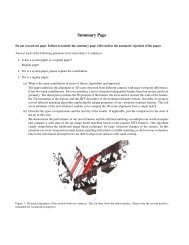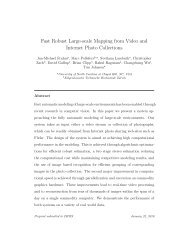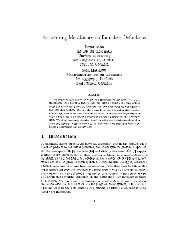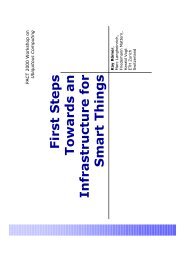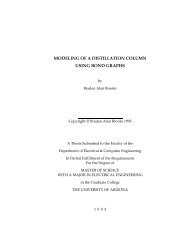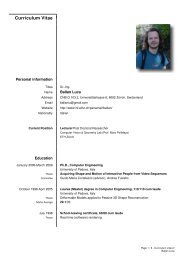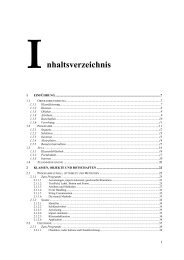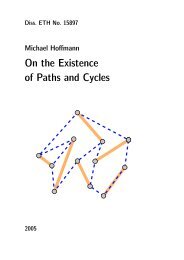A CIL Tutorial - Department of Computer Science - ETH Zürich
A CIL Tutorial - Department of Computer Science - ETH Zürich
A CIL Tutorial - Department of Computer Science - ETH Zürich
You also want an ePaper? Increase the reach of your titles
YUMPU automatically turns print PDFs into web optimized ePapers that Google loves.
CHAPTER 6. OVERRIDING FUNCTIONS 48<br />
open Cil<br />
let tut6 (f : file) : unit = ()<br />
6.3 tut6.c<br />
In tut6.c, we demonstrate how to use the dynamic linker to override library functions. In particular,<br />
we wrap calls to pthread mutex lock and pthread mutex unlock. We'll do this by calling dlsym<br />
found in dlfcn.h with the ag RTLD NEXT, which fetches a pointer to the original function we are<br />
overriding. Below are the includes we'll need.<br />
../ciltut-lib/src/tut6.c<br />
# define _GNU_SOURCE // Needed for RTLD_NEXT<br />
# include // For printf<br />
# include // for RTLD_NEXT<br />
# include // for pthread_*<br />
# include // for checked_dlsym<br />
First, we set up function pointers at global scope to point at the original versions <strong>of</strong> the functions,<br />
which we'll call from inside <strong>of</strong> our wrappers.<br />
../ciltut-lib/src/tut6.c<br />
static int (*pthread_mutex_lock_orig) (pthread_mutex_t *m) = NULL;<br />
static int (*pthread_mutex_unlock_orig)(pthread_mutex_t *m) = NULL;<br />
We'll also declare a ag so that we can enable and disable lock tracing.<br />
../ciltut-lib/src/tut6.c<br />
static int enable_lock_tracking = 0;<br />
With the pointers to the original functions declared, we can now write the wrappers. The wrappers<br />
have the same name as the original functions. This way, calls to the functions will be routed to these<br />
versions. The rst thing that the wrapper functions do is set up the pointers to the original calls<br />
using checked dlsym. checked dlsym will abort the program if the function named by the string<br />
does not exist. After ensuring that the original functions exist, the wrappers may then execute<br />
whatever actions are needed to implement their purpose, and to call the original functions.



